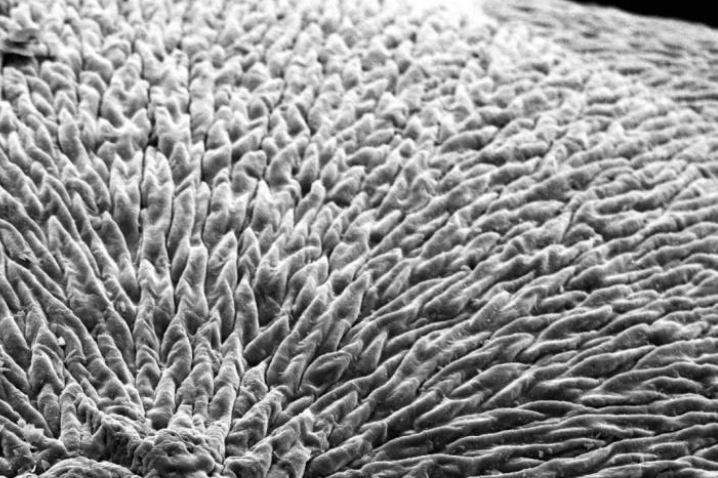Pictured is a close-up of enamel-like material created by scientists in London. Photo by Alvaro Mata/Queen Mary’s School of Engineering and Materials Science
June 1 (UPI) -- New mineralized material has been developed than can regenerate hard tissues such as enamel and bone.
Researchers at Queen Mary University of London are working on the materials that are precise, and look and behave like dental enamel. Their findings were published Friday in the journal Nature Communications.
The new material could be used for the prevention and treatment of tooth decay or tooth sensitivity, which is known as dentin hypersensitivity, researchers said.
"This is exciting because the simplicity and versatility of the mineralization platform opens up opportunities to treat and regenerate dental tissues," first author Dr Sherif Elsharkawy, a dentist and professor at Queen Mary's School of Engineering and Materials Science, said in a press release. "For example, we could develop acid resistant bandages that can infiltrate, mineralize, and shield exposed dentinal tubules of human teeth for the treatment of dentin hypersensitivity."
Enamel, which is on the outer part of teeth, is the hardest tissue in the body. It is exposed to acidic foods and drinks, extreme temperatures and biting forces -- yet it survives.
But it cannot regenerate new material. More than 50 percent of the world's population is effected by this problem, researchers said.
"Materials such as nacre, bone and dental enamel possess distinct structural organization at different length scales, which enhance their bulk material properties and functionality," the researchers wrote. "The capacity to create synthetic materials that emulate such ingenious architectures represents a major goal in materials science and an opportunity to tune and profoundly improve functionality."
They developed the material based on a specific protein material that can trigger and guide the growth at multiple scales, much like crystals grow when dental enamel develops in our body.
"A major goal in materials science is to learn from nature to develop useful materials based on the precise control of molecular building-blocks," lead author Dr. Alvaro Mata, from Queen Mary's School of Engineering and Materials Science, said. "The key discovery has been the possibility to exploit disordered proteins to control and guide the process of mineralization at multiple scales."
Mata said the material can potentially be used for a variety of applications in regenerative medicine. And, the study gives insights into protein disorder's role in human physiology and pathology.
"Through this, we have developed a technique to easily grow synthetic materials that emulate such hierarchically organized architecture over large areas and with the capacity to tune their properties," Mata said.















